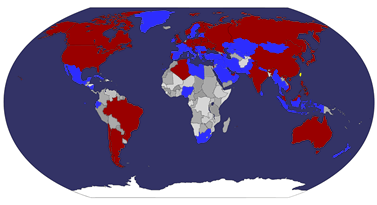120th anniversary of the Orient Express/
120ème anniversaire de L'Orient-Express
"The Orient Express is the name of a long-distance passenger train originally operated by the Compagnie Internationale des Wagons-Lits. Its route has changed many times, and several routes have in the past concurrently used the name (or slight variants thereof). Although the original Orient Express was simply a normal international railway service, the name has become synonymous with intrigue and luxury travel. The two city names most intimately associated with the Orient Express are Paris and Istanbul, the original endpoints of the service.
The current Orient Express does not serve Paris or Istanbul. Its immediate predecessor, a through overnight service from Paris to Vienna ran for the very last time from Paris on Friday, June 8, 2007. Since then, the route, still called the "Orient Express", has been shortened to start from Strasbourg instead,occasioned by the inauguration of the LGV Est which affords much faster travel times from Paris to Strasbourg. The new curtailed service leaves Strasbourg at 22.20 daily, shortly after the arrival of a TGV from Paris, and is attached at Karlsruhe to the overnight sleeper service from Amsterdam to Vienna."-wiki
"L'Orient-Express est un train de luxe qui, depuis 1883, assure la liaison entre Paris (gare de Paris-Est), Vienne et Istanbul, desservant plusieurs capitales européennes. Dans les années 1920, avec des artistes-décorateurs comme Prou ou bien René Lalique, le style « Orient-Express » atteignit son apogée. C'est après plusieurs changements d'itinéraire, de guerres et enfin par l'abaissement continu de son prestige pendant la Guerre froide, que le service régulier vers Istanbul et Athènes cessa en 1977, vaincu par la faiblesse de sa vitesse commerciale (à peine 55 km/h vers la fin), due aux interminables arrêts douaniers dans les pays communistes traversés, et malmené par la concurrence grandissante de l'avion.Depuis 1982, un nouveau train de luxe régulier, assuré par compagnie privée, a pris le relais sur le trajet Boulogne-sur-Mer (désormais Calais)-Paris-Venise, via Milan ou Innsbruck, avec parfois un prolongement vers Istanbul. L'Orient-Express d'origine continue en outre son service régulier entre Paris et Vienne, la section Paris-Strasbourg étant désormais assurée par le TGV Est, en correspondance."-wiki

 "The Korea Stamp Corporation has issues the souvenir sheet to mark the 20th anniversary of nominaltion of Jong Il Peak.
"The Korea Stamp Corporation has issues the souvenir sheet to mark the 20th anniversary of nominaltion of Jong Il Peak.














































 taiwan
taiwan  cover or postcard
cover or postcard  FDC
FDC 





























































































